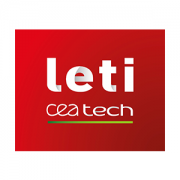French Research Team Helps Extend MRI Detection of Diseases & Lower Health-Care Costs
CEA, INSERM and G2ELab Brings Grenoble Region’s Expertise In Advanced Medicine & Magnetism Applications to H2020 IDentIFY Project
Three Grenoble-based research and medical partners have been selected to join the European Union-funded IDentIFY project to significantly extend the capability of magnetic resonance imaging (MRI) in disease detection.
The four-year IDentIFY project brings together the complementary expertise of universities and research centers in U.K, Finland, France, Germany, Italy, and Poland. It is coordinated by the University of Aberdeen in Scotland U.K.
The French IDentIFY partners are CEA (led by Leti, a CEA Tech institute, and Inac), INSERM, and G2ELab.
The project, which is part of the EU Horizon 2020 program, was initiated by INSERM. It aims to further develop and help commercialize a characterization technique, called Fast Field-Cycling (FFC) MRI to obtain quantitative, disease related information that is invisible to standard MRI. Unlike standard MRI, in which scanners operate at a strong, fixed magnetic field, FFC-MRI scanners pioneered by the University of Aberdeen yield images of living organisms at varying low values of the magnetic field by fast switching of this field from high to near-zero values. This technique can deliver a wealth of unprecedented medical information at a lower cost than conventional MRI.
“This technology presents a huge opportunity to cost-effectively improve health care, especially for cancer, one of the world’s fastest-growing diseases,” said Marie Semeria, CEO of Leti, a CEA Tech institute. “The three Grenoble-based partners in the IDentIFY project are a strong testament to the area’s concentration of expertise in health care and advanced magnetism technology, and its many applications.”
Previous work on Fast-Field Cycling MRI at Aberdeen has shown it can have a major impact on the diagnosis and treatment of serious diseases. In fact, pilot studies have demonstrated the technology’s ability to detect cancer, osteoarthritis and sarcopenia, the loss of muscle mass and strength as part of the aging process.
With cancer, FFC-MRI will enable tumor grading, treatment planning and monitoring of the response to chemotherapy, and especially the characterization of peritumoral regions.
In addition, Fast Field-Cycling MRI has the potential to detect early changes in the brain caused by neurodegenerative disease processes. This may enable early diagnosis of Alzheimer’s and Parkinson’s diseases.
For over 50 years, following the French physicist Louis Néel (Nobel Prize in Physics, 1970), the Grenoble region has been recognized as a global leader in research and development of magnetism for advanced technological purposes. This expertise eventually resulted in a very accurate control of static and time-dependent low and ultra-low magnetic fields, which is a key challenge for FFC-MRI to work efficiently. For that purpose, precise measurements, mathematical modeling and real-time magnetic shielding will be implemented for the FFC NMR/MRI devices, thanks to the shared know-how of the G2ELab laboratory and Leti, which are working closely together on this ambitious project.
The contributions of the Grenoble participants to the IDentIFY project are:
- CNRS/UGA/Grenoble INP: Environmental field measurement and modelling
- Leti: Development of magnetic field correction coils and their associated electronics
- INSERM: MRI methodology, tissue-bank testing and validation
- Inac: Decades of experience in FFC-NMR relaxometry methods and measurements and the information that can be extracted from them through theoretical modelling. Linking of scientists to create the project and beyond.
In addition to Aberdeen University, other project participants include the Stelar Company (S.r.l., Mede, Italy), which has developed the first commercial FFC-NMR instruments; the University of Warmia and Mazury (Olsztyn, Poland), the Ilmenau University of Technology (Ilmenau, Germany) and the International Electric Co. (Helsingfors, Finland).




Leave a Reply
Want to join the discussion?Feel free to contribute!